Related Research Articles
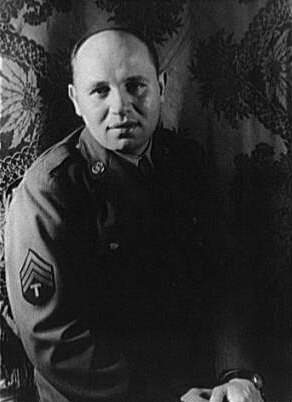
Romare Bearden was an American artist, author, and songwriter. He worked with many types of media including cartoons, oils, and collages. Born in Charlotte, North Carolina, Bearden grew up in New York City and Pittsburgh, Pennsylvania, and graduated from New York University in 1935.
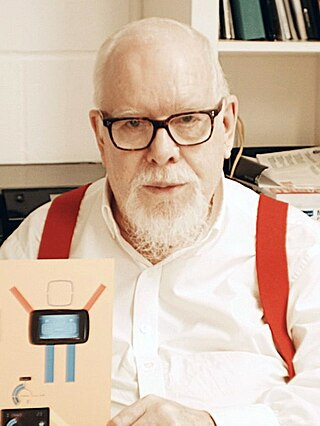
Sir Peter Thomas Blake is an English pop artist. He co-created the sleeve design for the Beatles' 1967 album Sgt. Pepper's Lonely Hearts Club Band. His other works include the covers for two of The Who's albums, the cover of the Band Aid single "Do They Know It's Christmas?", and the Live Aid concert poster. Blake also designed the 2012 Brit Award statuette.

Lenore "Lee" Krasner was an American painter and visual artist active primarily in New York whose work has been associated with the Abstract Expressionist movement. She received her early academic training at the Women's Art School of Cooper Union, and the National Academy of Design from 1928 to 1932. Krasner's exposure to Post-Impressionism at the newly opened Museum of Modern Art in 1929 led to a sustained interest in modern art. In 1937, she enrolled in classes taught by Hans Hofmann, which led her to integrate influences of Cubism into her paintings. During the Great Depression, Krasner joined the Works Progress Administration's Federal Art Project, transitioning to war propaganda artworks during the War Services era.

Richard William Hamilton was an English painter and collage artist. His 1955 exhibition Man, Machine and Motion and his 1956 collage Just what is it that makes today's homes so different, so appealing?, produced for the This Is Tomorrow exhibition of the Independent Group in London, are considered by critics and historians to be among the earliest works of pop art. A major retrospective of his work was at Tate Modern in 2014.
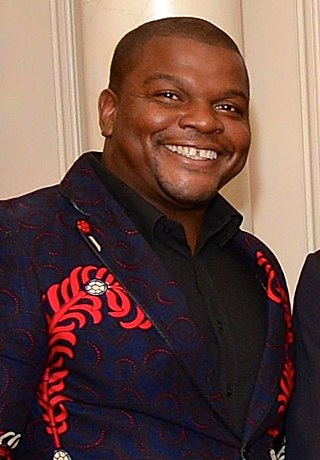
Kehinde Wiley is an American portrait painter based in New York City. He is known for his naturalistic paintings of Black people that reference the work of Old Master paintings. In 2017, Wiley was commissioned to paint former President Barack Obama's portrait for the Smithsonian National Portrait Gallery. The Columbus Museum of Art hosted an exhibition of his work in 2007 and describes his paintings as "heroic portraits which address the image and status of young African-American men in contemporary culture."

Alex Katz is an American figurative artist known for his paintings, sculptures, and prints. Since 1951, Katz's work has been the subject of more than 200 solo exhibitions and nearly 500 group exhibitions throughout the United States and internationally. He is well known for his large paintings, whose bold simplicity and heightened colors are considered as precursors to Pop Art.
Wangechi Mutu is a Kenyan American visual artist, known primarily for her painting, sculpture, film, and performance work. Born in Kenya, Mutu now splits her time between her studio there in Nairobi and her studio in Brooklyn, New York, where she has lived and worked for over 20 years. Mutu's work has directed the female body as subject through collage painting, immersive installation, and live and video performance while exploring questions of self-image, gender constructs, cultural trauma, and environmental destruction and notions of beauty and power.
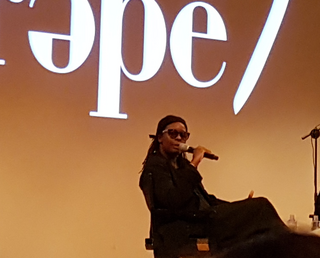
Mickalene Thomas is a contemporary African-American visual artist best known as a painter of complex works using rhinestones, acrylic, and enamel. Thomas's collage work is inspired from popular art histories and movements, including Impressionism, Cubism, Dada, the Harlem Renaissance, and selected works by the Afro-British painter Chris Ofili. Her work draws from Western art history, pop art, and visual culture to examine ideas around femininity, beauty, race, sexuality, and gender.
Kimathi Donkor is a London-based contemporary British artist whose paintings are known for their exploration of global, black histories. His work is exhibited and collected by international museums, galleries and biennials including London's National Portrait Gallery, the British Museum, the Diaspora Pavilion at the 57th Venice Biennial, the 29th São Paulo Art Biennial and the 15th Sharjah Biennial. He is of Ghanaian, Anglo-Jewish and Jamaican family heritage, and his figurative paintings depict "African diasporic bodies and souls as sites of heroism and martydom, empowerment and fragility...myth and matter".
Kerry James Marshall is an American artist and professor, known for his paintings of Black figures. He previously taught painting at the School of Art and Design at the University of Illinois at Chicago. In 2017, Marshall was included on the annual Time 100 list of the most influential people in the world. He was born and raised in Birmingham, Alabama, and moved in childhood to South Central Los Angeles. He has spent much of his career in Chicago, Illinois.
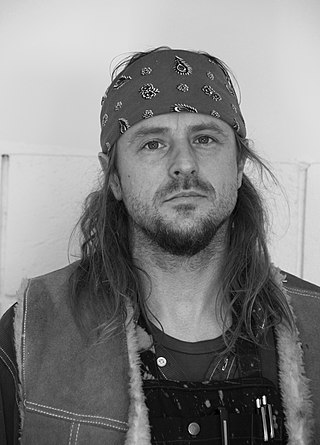
Sterling Ruby is an American artist who works in a large variety of media including ceramics, painting, drawing, collage, sculpture, video, and textiles. Often, his work is presented in large and densely packed installations. The artist has cited a diverse range of sources and influences including aberrant psychologies, urban gangs and graffiti, hip-hop culture, craft, punk, masculinity, violence, public art, prisons, globalization, American domination and decline, waste and consumption. In opposition to the minimalist artistic tradition and influenced by the ubiquity of urban graffiti, the artist's works often appear scratched, defaced, camouflaged, dirty, or splattered. Proclaimed as one of the most interesting artists to emerge this century by New York Times art critic Roberta Smith, Ruby's work examines the psychological space where individual expression confronts social constraint. Sterling Ruby currently lives and works in Los Angeles. His studio is located in Vernon, south of downtown Los Angeles.
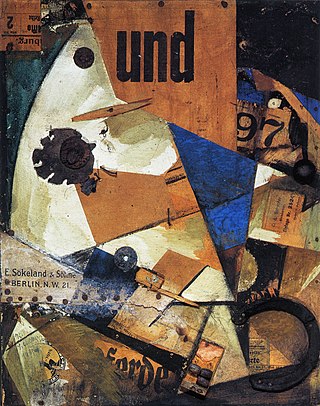
Collage is a technique of art creation, primarily used in the visual arts, but in music too, by which art results from an assemblage of different forms, thus creating a new whole.
Lyle Ashton Harris is an American artist who has cultivated a diverse artistic practice ranging from photographic media, collage, installation art and performance art. Harris uses his works to comment on societal constructs of sexuality and race, while exploring his own identity as a queer, black man.
Ellen Gallagher is an American artist. Her work has been shown in numerous solo and group exhibitions and is held in the permanent collections of many major museums. Her media include painting, works on paper, film and video. Some of her pieces refer to issues of race, and may combine formality with racial stereotypes and depict "ordering principles" society imposes.
Hurvin Anderson is a British painter.
Zohra Opoku is a German-born Ghanaian textile artist and photographer. She used textile patterns to inform her photographed portraits. She was born in Altdöbern, Germany, and she lives in Accra. She is known for her installations, performances, textile designs, photographs and videos.

Derrick Adams is an American visual and performance artist and curator. Much of Adams' work is centered around his Black identity, frequently referencing patterns, images, and themes of Black culture in America. Adams has additionally worked as a fine art professor, serving as a faculty member at Maryland Institute College of Art.
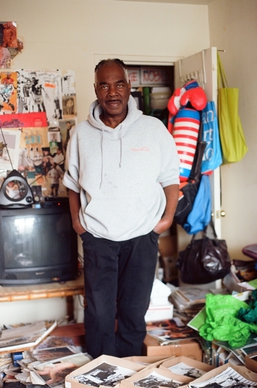
Frederick Weston (1946–2020) was an American interdisciplinary artist. Self-taught, he worked in collage, drawing, sculpture, photography, performance, and creative writing. He was raised in Detroit, Michigan and moved to New York City in the mid-1970s. Over the course of his time in New York, he developed a vast, encyclopedic archive of images and ephemera related to fashion, the body, advertising, AIDS, and queer subjects through his various jobs and social presence in hustler bars and gay nightlife. His early collages and photography, which often utilized likenesses of patrons, highlighted the social and communal nature of such institutions. Continuing this theme, in the mid-1990s, he became co-founder of guerrilla artist group Underground Railroad, which produced street art and outdoor installations. In his lifetime, he exhibited to small audiences in non-traditional art spaces and only in the last two years of his life did his work become widely known and appreciated in urban art circles.
Gallery 1957 is a contemporary art gallery located in Accra, Ghana. The gallery intends to present artists of West Africa and the diaspora. It was established in March 2016 by British construction company owner Marwan Zakhem. As of 2018, the gallery has shown artists including Serge Attukwei Clottey, Gideon Appah, Modupeola Fadugba, Godfried Donkor, Yaw Owusu, and Zohra Opoku.
Lester Julian Merriweather is an American visual artist and curator, known for his collage. He lives in Memphis, Tennessee.
References
- ↑ Holland Cotter, "Art In Review; Godfried Donkor", The New York Times , 16 May 2003.
- ↑ 1:54 Contemporary African Art Fair (26 October 2013), 1:54 FORUM | 17 October 2013: Artist Talks | Godfried Donkor , retrieved 8 December 2016
{{citation}}: CS1 maint: numeric names: authors list (link) - 1 2 "Exploring Exploitation: Interview with Godfried Donkor". Art/ctualité (in French). 8 February 2015. Archived from the original on 5 March 2016. Retrieved 8 December 2016.
- 1 2 3 4 5 6 "EVA International". www.eva.ie. Archived from the original on 18 December 2016. Retrieved 8 December 2016.
- 1 2 3 4 Gary Al-Smith, "Q&A with Godfried Donkor," SuperSport, 8 December 2016.
- ↑ Bernier, Celeste-Marie (2008). "'Speculation and the Imagination': History, Storytelling and the Body in Godfried Donkor's 'Financial Times' (2007)". Slavery & Abolition. 29 (2): 203–17. doi:10.1080/01440390802027855. S2CID 144804839.
- ↑ webdesign, ralf herwartz, herwartz. "godfried-donkor". www.artco-art.com. Retrieved 8 December 2016.
{{cite web}}: CS1 maint: multiple names: authors list (link) - 1 2 "In Ireland, a Biennial Examines the Vestiges of Empire". Hyperallergic. 15 July 2016. Retrieved 8 December 2016.
- ↑ Magazine, Wallpaper* (26 April 2016). "'Still (the) Barbarians': Ireland's Biennial of Contemporary Art goes global | Art | Wallpaper* Magazine". Wallpaper*. Retrieved 8 December 2016.
- ↑ "1017 02 Artist Talk - Hans Ulrich Obrist in conversation with Godfried Donkor". Vimeo. Retrieved 8 December 2016.
- ↑ Polly Brock, "Exploring Exploitation: Interview with Godfried Donkor" Archived 5 March 2016 at the Wayback Machine , Art/ctualité, 9 February 2015.